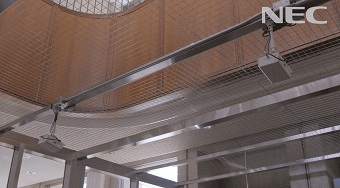NEC Corporation and NEC Corporation of America have announced the operation of Phase 3 of the thermal temperature screening and facial imaging project at Hawaii’s five major airports that accept trans-Pacific flights. Phase 3 consisted of the installation of the facial imaging technology that will help airport representatives efficiently notify passengers who have been detected to have an elevated core body temperature of 100.4 degrees Fahrenheit (38 degrees Celsius) and higher a common symptom of COVID-19, by thermal screening cameras installed in Phase 1 and Phase 2.
This project is being carried out by the Hawaii Department of Transportation (HDOT) Airports Division with a team led by NEC Corporation. The thermal screening equipment of the project has been operational since August 2020. The combined thermal screening and facial imaging equipment began operations at the Daniel K. Inouye International Airport (HNL), Kahului Airport (OGG), Lihue Airport (LIH), Ellison Onizuka Kona International Airport at Keahole (KOA) and Hilo International Airport (ITO) in early 2021, after personnel were trained in operating the system.
Phase 1 and Phase 2, completed in 2020, installed thermal screening cameras at all arrival gates to screen passengers as they deplane an aircraft. Those detected with a core body temperature of 100.4 degrees and higher will now have their image taken. The image will be available for airport representatives to identify and notify persons as they approach the nearest monitoring control room located in the airport terminal. If a manual temperature check confirms the initial temperature reading, the passenger will have an additional medical screening which includes the option to have a COVID-19 sample taken.
Any images collected will remain anonymous, meaning no traveler’s image will be connected to personal information, such as a traveler’s name, address or driver’s license number. It will not contain information about criminal history or outstanding warrants. The image will be deleted within 30 minutes and will not be shared with any outside agencies. Individuals with a temperature of 100.3 degrees and lower will not have their image taken at all.
The use of the thermal screening and facial imaging technology is safer and more cost effective than manual temperature checks. Without the technology, employees would need to be stationed at each gate for every arriving flight to individually take the passenger’s temperature one by one, which takes longer, increases risk of exposure and requires additional funding and resources. With this technology, an employee can simultaneously monitor multiple gates from a control room in an efficient and safe manner.








